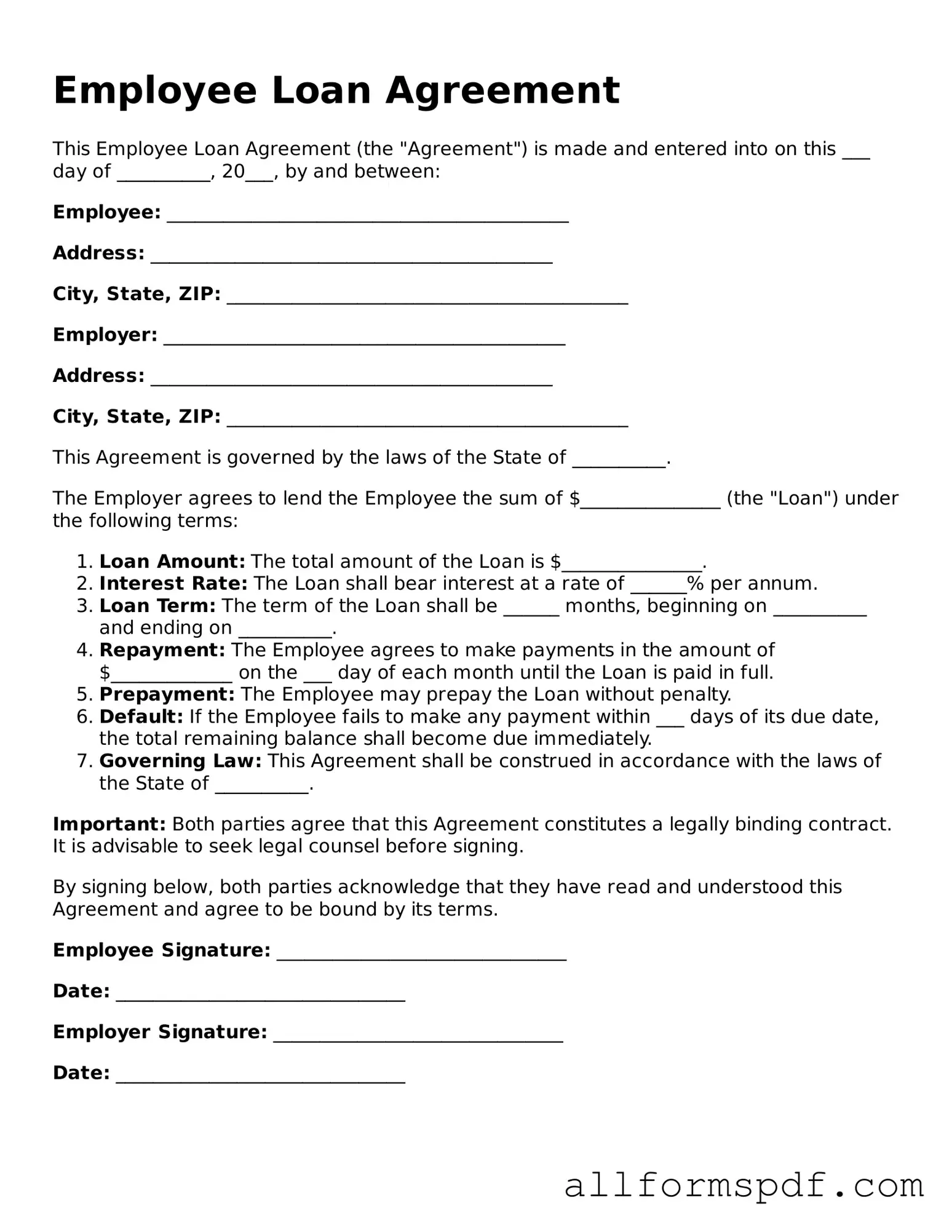Filling out the Employee Loan Agreement form can be straightforward, but many people make common mistakes that can lead to complications down the line. One frequent error is not providing accurate personal information. Ensure that your name, address, and contact details are correct. A simple typo can cause delays in processing your loan.
Another mistake is neglecting to read the terms and conditions thoroughly. Many individuals skim through the document without understanding the implications of the agreement. Take the time to read each section carefully. This will help you avoid surprises later on.
Some people fail to specify the loan amount they are requesting. This omission can lead to confusion and may result in the denial of your application. Always clearly state the amount you need, along with a brief explanation of why you are requesting it.
Inaccurate or incomplete financial information is another common pitfall. When detailing your income and expenses, be honest and thorough. Underreporting your income or failing to include all debts can jeopardize your loan approval.
Additionally, many forget to sign and date the form. Without your signature, the agreement is not valid. This step is crucial and should not be overlooked.
Some individuals also neglect to include supporting documentation. Depending on the lender's requirements, you may need to provide pay stubs, tax returns, or other financial documents. Failing to include these can delay the process.
Another mistake is misunderstanding repayment terms. Some borrowers do not fully grasp the repayment schedule or interest rates. Clarifying these details before signing can prevent issues in the future.
People often underestimate the importance of keeping a copy of the signed agreement. After submission, retain a copy for your records. This ensures you have a reference point if any disputes arise.
Lastly, many individuals rush through the process without asking questions. If anything is unclear, don’t hesitate to seek clarification. Taking the time to understand the agreement can save you from potential headaches later.
By being aware of these common mistakes, you can fill out the Employee Loan Agreement form more effectively and avoid complications that could arise from errors or misunderstandings.
